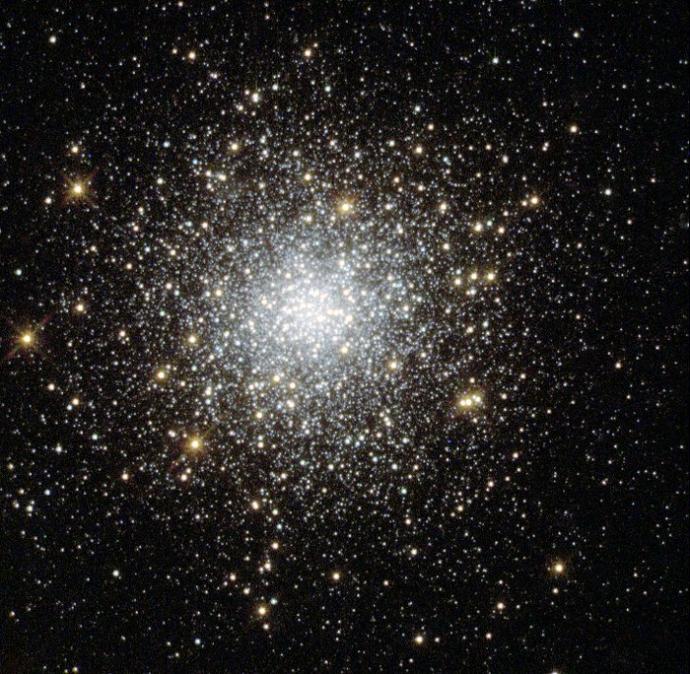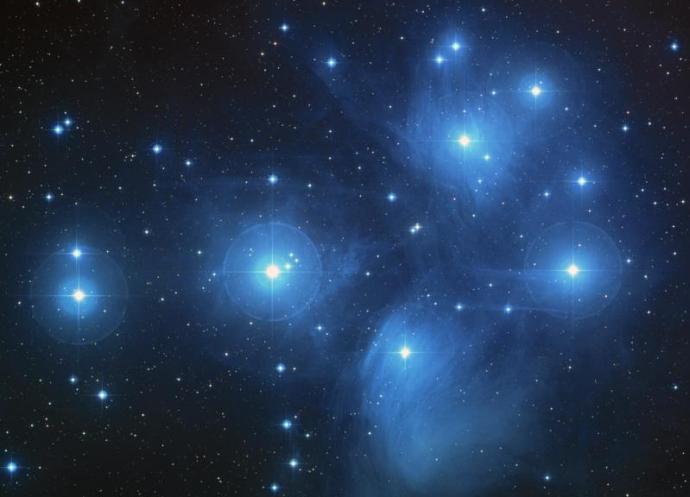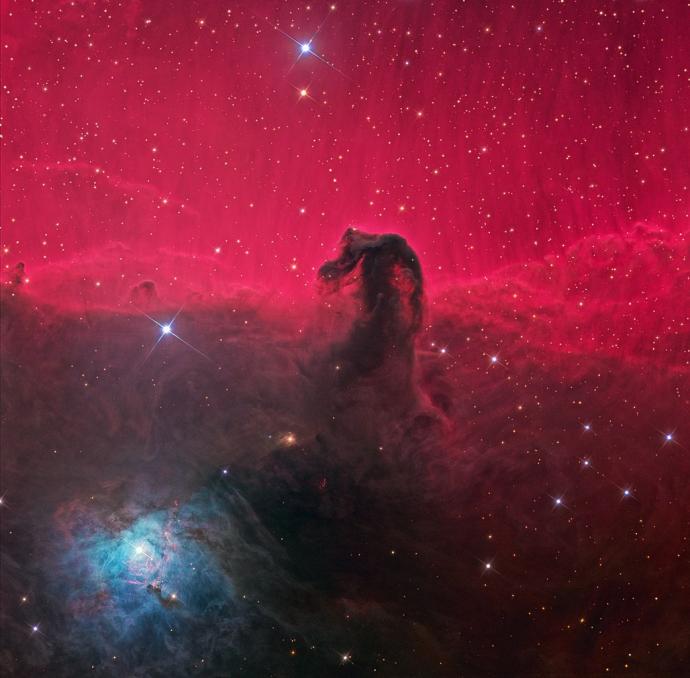Star clusters are groups of stars which are held together by gravity.
There are two types of star clusters: globular clusters and open clusters.
- Globular Clusters
A globular cluster is a massive sphere of stars. The stars are held close together by gravity, and they all orbit the cluster's centre. These clusters can be up to 300 light years in size and contain hundreds of thousands of stars.
The stars in these clusters are very old, and they were all created at the same time from the same material. This means we can study them to learn how the first stars formed.
Image CreditThis work by NASA/ESA/S. Larsen (Radboud University, the Netherlands) is licensed under Creative Commons Zero v1.0 Universal
CreditThis work by NASA/ESA/S. Larsen (Radboud University, the Netherlands) is licensed under Creative Commons Zero v1.0 UniversalGlobular Cluster Fornax5 Globular clusters are often found in the star halos of spiral galaxies. A star halo is a huge sphere of stars which surrounds most spiral galaxies. This means the clusters are seen above or below the plane of our own flat galaxy, the Milky Way. We think there are about 150 globular clusters in the Milky Way.
Globular clusters can also be found within the edges of elliptical galaxies.
Examples of well-known globular clusters include M3 (the first object discovered by Charles Messier) and M13 (discovered by Edmond Halley).
In the 21st Century, astronomers discovered another type of star cluster. These are known as Super Star Clusters. These are massive (perhaps up to 50,000 solar masses worth of stars) clusters of young, very bright stars. It is thought that they could be globular clusters in the making.
- Open Clusters
An open cluster is a group of tens or hundreds of stars which are loosely held together by gravity. The stars in an open cluster slowly move away from each other over time. In contrast, stars in globular clusters are held very tightly together.
There are around 1,500 open clusters in the Milky Way. Examples of open clusters include M25, M44 (the Beehive), and M45 (the Pleiades).
Image CreditThis work by NASA/HST is licensed under Creative Commons Zero v1.0 Universal
CreditThis work by NASA/HST is licensed under Creative Commons Zero v1.0 UniversalPleiades Star Cluster Many of the stars in open clusters are massive, bright, blue stars and are often less than a few hundred million years old. This is very young for a star. So we only find open clusters in places where stars are forming. This includes spiral galaxies and irregular galaxies.
All the stars in an open cluster formed around the same time from the same cloud of gas and dust. This means they had the same initial chemistry, so any differences between the stars in the same cluster must be because they are different masses. Stars in one cluster can vary in brightness, colour, and length of lifetime.
Some of the gas clouds that formed the stars may still be seen in young clusters. The young stars give off radiation, which lights up the gas in the cloud. This creates a glowing nebula, like the Horsehead Nebula in the constellation Orion. When the cloud glows in this way, it is known as nebulosity.
Image CreditThis work by Ken Crawford is licensed under Creative Commons Attribution Share Alike 4.0 International
CreditThis work by Ken Crawford is licensed under Creative Commons Attribution Share Alike 4.0 InternationalHorsehead Nebula
